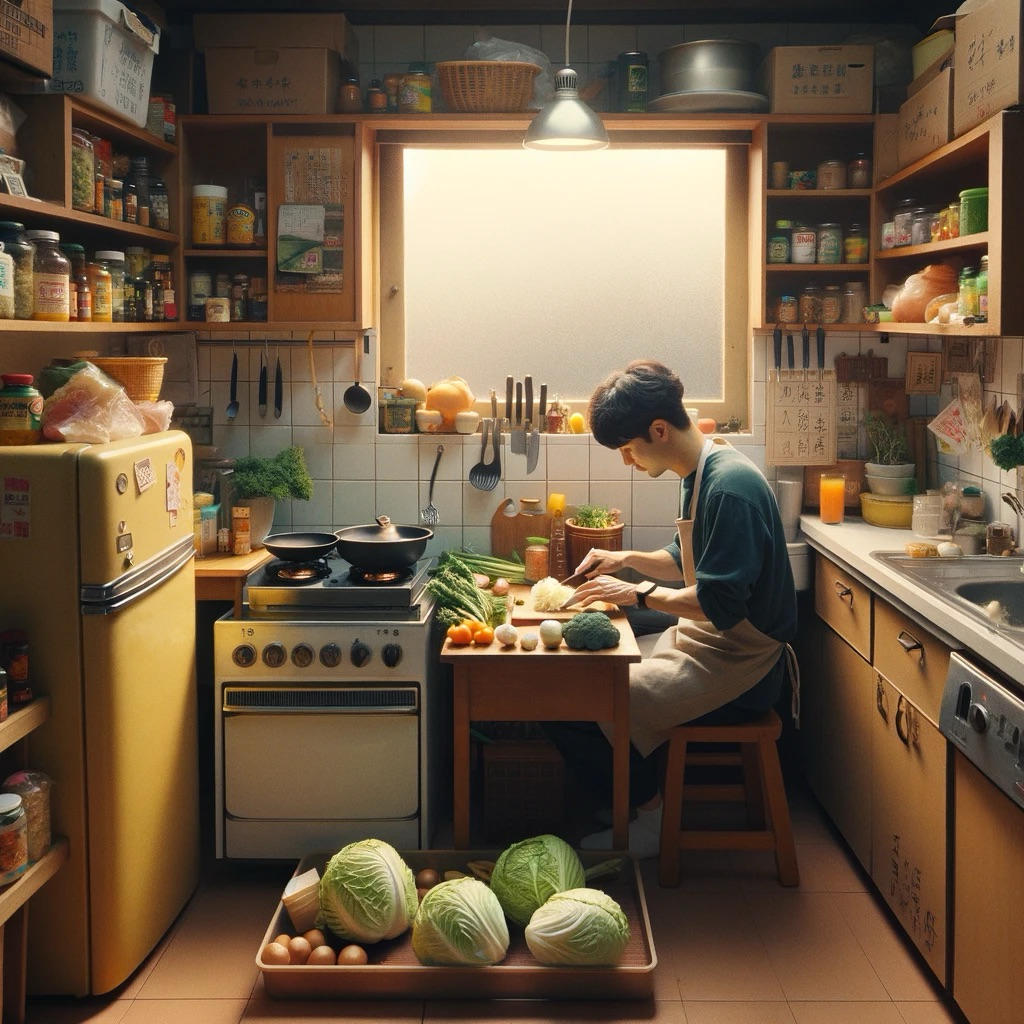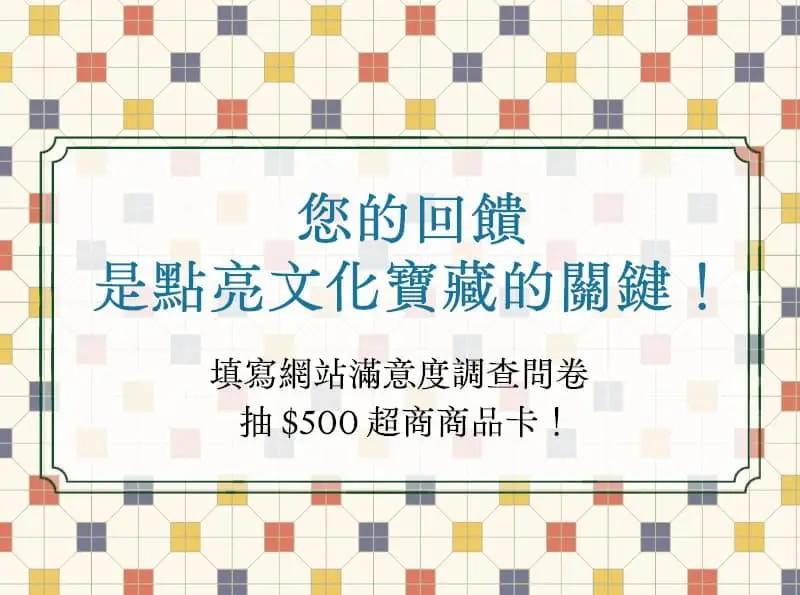也因為對煮菜的知識有限,好像買來買去都是相似的東西,意識到這一點,就會在採買時多留意看看是否有可能多買一樣食材,讓餐桌多一點變化,最好還可以跟冰箱內的其他食材做出不同菜餚。
當回到家裡,時間往往也到了做菜的時間,看過家事達人把食材用盒子整齊的分裝,做菜拿出時就很俐落,不過家裡冰箱小小一台,每買的量也不多,盡量讓食材從紅白袋拿出來就好了。
廚房空間總是覺得不大,食材擺一擺就滿了,盡力挪一個空位出來切菜,刀法夠爛就算了,家裡的刀具也是一點也不鋒利,不過也可以充當菜切不好的理由。如果有雙口爐就可以多工進行,加快料理速度了,可惜租房的地方只有配單口爐,真的覺得出外吃飯省時多了,但是。偶爾自己料理,煮出來一桌菜還真是有成就感。
After living independently, I started practicing cooking for myself and selecting ingredients. Walking through the market stalls, I realized that I wasn't familiar with every ingredient and sometimes thought, 'Why is this so expensive?' But it didn't matter as long as I bought what I needed. Since I don't cook often, I tried to restrain myself from buying too much. If time allows, I would explore the entire market before heading home, treating it as exercise.
Due to my limited knowledge of cooking, I tended to buy similar things repeatedly. Realizing this, I began to pay more attention during my shopping trips to see if I could buy an additional ingredient to add variety to my meals. Ideally, it would complement the other ingredients already in the fridge to create different dishes.
When I got home, it was often time to cook. I had seen experts neatly organize ingredients into containers, making it easy to grab what they needed while cooking. However, my small fridge and the limited quantity of ingredients I bought meant I usually just took items out of their red and white plastic bags.
The kitchen space always seemed small, quickly filling up with ingredients. I tried my best to clear a space for chopping vegetables. My poor knife skills were compounded by dull knives, which provided a convenient excuse for any poorly cut vegetables. A double-burner stove would have allowed me to multitask and speed up the cooking process, but unfortunately, my rented place only had a single-burner stove. While eating out often seemed more time-efficient, occasionally cooking a homemade meal brought a real sense of accomplishment.
-
《島嶼未來料理教室》Future Formosa Culinary Lab Profile Nr.51
31-40歲的新北嗜甜如螞蟻者,平均花費100元在餐費上。因為意料外的美味而對飲食記憶留下深刻印象。如果世界末日終將來到,會選擇與談得來的陌生人共享這一餐。關於家庭的一道料理,他提到煎鮭魚。
"Sweet Tooth Like an Ant"
Male(31-40 yrs)/ New Taipei City / 100 NTD per meal
Profound dining impressions were shaped by unexpectedly delicious food.
If the end of the world were to come, he would choose to share the meal with a like-minded stranger.
As for a family dish, he mentioned pan-seared salmon.
-
國立臺灣歷史博物館的第 1 個「公共飲食記憶 NFT 化」實驗計畫《超時空島嶼餐桌》
National Museum of Taiwan History's First NFT Experimental Project on Public Dining Memories《Time-Space Dining Tables》
「國立臺灣歷史博物館」為推動國家文化記憶庫之永續發展,融入當代議題、常民生活及在地關懷,連結博物館專業、數位創新思維與多元社群行動,以促進臺灣原生文化之活化運用,鼓勵全民共同開展記憶庫多元主題與主題素材近用。
本計畫案於112年推出《島嶼庫客 Islands Cooker》飲食記憶系列7支影片,探究臺灣飲食的歷史成因,113年延續「餐桌」的概念,加入「未來」元素,委由畸零地創造股份有限公司辦理《島嶼未來料理教室——NFT設計工作坊》,以記憶庫長期深耕之飲食記憶主題,透過非同質化代幣(Non-Fungible Token,以下簡稱 NFT)設計工作坊,增進記憶庫之內容與應用,落實臺灣原生文化之推廣。
《島嶼未來料理教室——NFT設計工作坊》以「推測設計」為核心,反思記憶料理的獨特性,其之於 NFT的當代意義及其飲食文化價值,並將工作坊延伸設計為「發掘身體飲食記憶,運用想像和推測來創造未來島嶼飲食文化」的參與式體驗活動。工作坊由編舞家與引導師,透過一連串的帶領、想像和對話,挖掘及連結蘊藏身體感知中的飲食記憶,並讓參與者書寫飲食記憶;接著由畸零地工作室與生成式AI 「ChatGPT 4o」協作製作出 「記憶食譜 NFT」及文字翻譯;最後線上場以「圍爐」的概念,讓參與者在雲端上互相分享與交流。
這些飲食記憶透過NFT不可替代、數位交換的特性,被永久保存並流傳,期望每個人都能回首屬於自己的飲食記憶和歷史,經由公共化的途徑與媒介,成為社會記憶的一部份,構築社群認同的可能。
To promote the sustainable development of the Taiwan Cultural Memory Bank, the National Museum of Taiwan History integrates contemporary issues, ordinary life, and local concerns. By combining museum expertise, digital innovation, and diverse community actions, it aims to revitalize and utilize Taiwan's indigenous culture. The museum encourages the public to collaboratively develop and access various themes and materials within the memory bank.
This project launched the "Islands Cooker" series of seven videos on culinary memories in 2023, exploring the historical origins of Taiwanese cuisine. Continuing with the concept of the "dining table" and incorporating "future" elements in 2024, the project entrusted Ground Zero Co., Ltd. to handle the "Islands Future Cuisine Classroom—NFT Design Workshop." By delving into the long-term themes of culinary memories from the Taiwan Cultural Memory Bank and utilizing the Non-Fungible Token (NFT) design workshop, the project aims to enhance the content and application of the memory bank, promoting the dissemination of Taiwan's indigenous culture.
The "Islands Future Cuisine Classroom—NFT Design Workshop" centers on "speculative design," reflecting on the uniqueness of memory cuisine and its contemporary significance and culinary cultural value in relation to NFTs. The workshop is extended into a participatory experiential activity, designed as "discovering culinary memories in body and using imagination and speculation to create future island culinary culture." The workshop, led by choreographers and facilitators, guides participants through a series of activities, including imagination and dialogue, to uncover and connect with culinary memories embedded in their bodily perceptions. Participants then write down their culinary memories. Next, Ground Zero Co., Ltd. collaborates with the generative AI "ChatGPT 4o" to create "Memory Recipe NFTs" and translate the texts. Finally, the online session, based on the concept of "reunion dinner," allows participants to share and exchange their experiences and creations in the cloud.
These culinary memories, preserved and circulated through the non-fungible and digital exchange characteristics of NFTs, are expected to be permanently stored and shared. The goal is for everyone to reflect on their own culinary memories and histories, making them part of societal memory through public pathways and media, thereby fostering a sense of community identity.
※本圖像為AI生成內容
※This image is AI-generated content.












